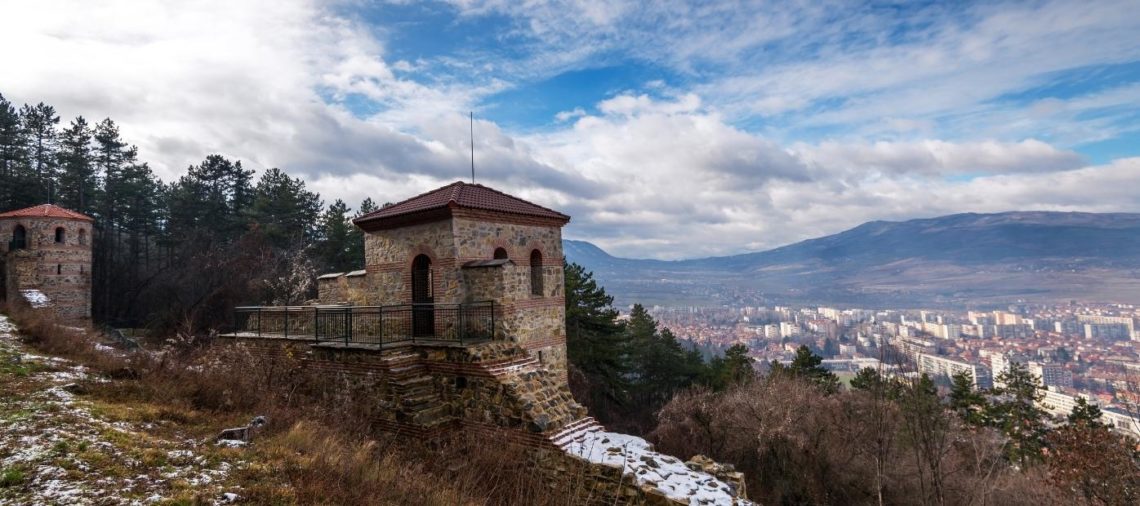Most of the time, Romanians choose the classic destinations for a holiday in Bulgaria: in summer – the Bulgarian seaside for sea and sun, in winter – Bansko resort for skiing. In between seasons, Veliko Tarnovo or Balcik are also on the list of quick holiday preferences, especially for tourists living in the south of the country. But Bulgaria is a beautiful country that offers many other surprisingly interesting destinations, putting them on the tourist “table” with strong arguments. These include ecumenical locations, thermal waters, archaeological remains, delicious gastronomy, and quality wines. And Kyustendil, Bulgaria, is one of them.
I had the opportunity to discover some of them at the invitation of the Bulgarian Tourist Office, which is implementing the EDEN destination promotion project, a project funded by the European Commission under the COSME 2014-2020 program. More precisely, EDEN (European Destination of Excellence) is an initiative of the European Commission that supports the development of local tourism by promoting lesser-known European destinations with huge potential. The Bulgarians selected 12 such destinations and invited TukTuk on an almost private tour to discover some great places to tell their stories about.
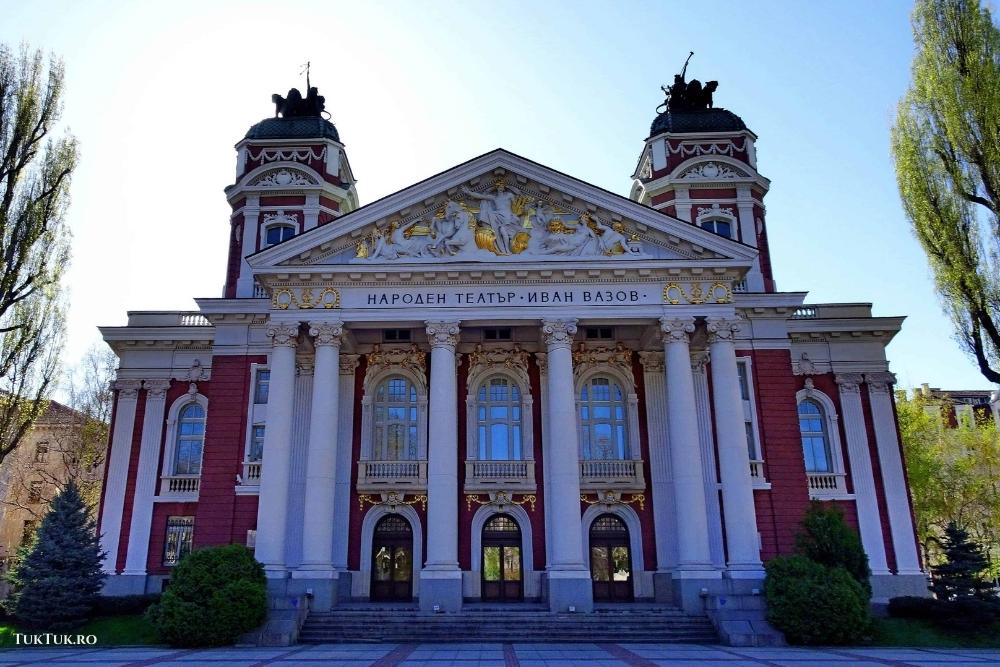
The Peugeot driven by Dobri sets off, leaving the parking lot of the Sofia airport. Irena, the “guide” from the Ministry of Tourism, “warms up” with a short stop in the capital. Sofia has a surprisingly beautiful city center, which I’ll explore a little more carefully on our return. The fact that the Bulgarians have discovered (digging for the metro) Roman remains that they have been able to put to good use makes the capital an exciting place, which is well worth a couple of days exploring. Many Romanians pass through or near Sofia on their way to Greece. But how many stop to visit, even on the run? Bottom line: it’s definitely worth it!
So, with the gentle, quiet, and plump Dobri at the helm, we stop for a couple of steps around the Ivan Vazov National Theatre, then set off on a mad dash to our first destination: Kyustendil.
Kyustendil – old churches and non-stop festivals
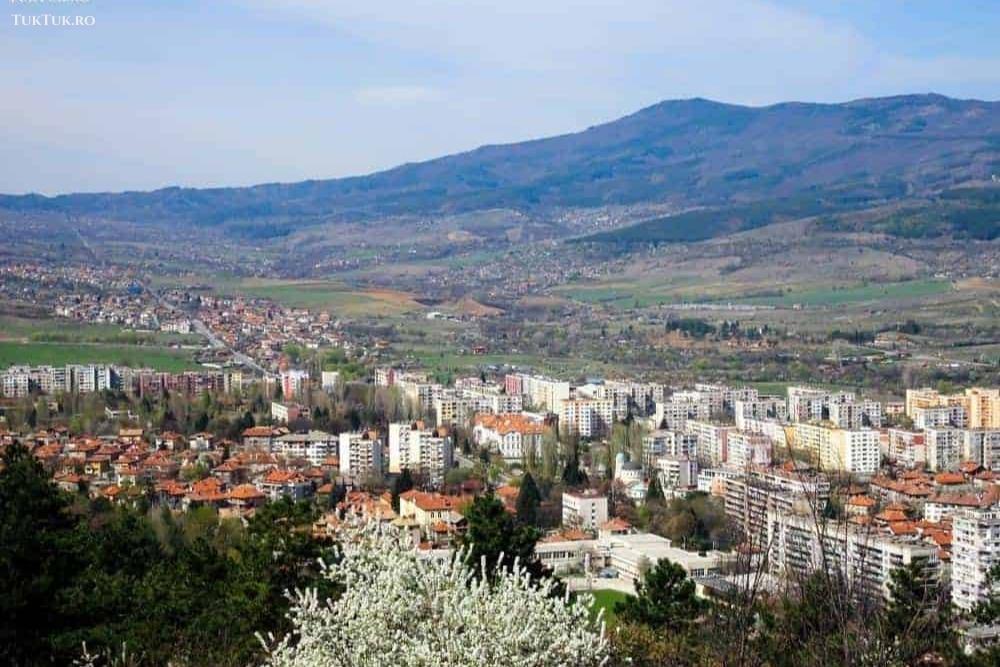
Kyustendil is a town in the far west of Bulgaria, capital of the province of the same name, “thrown” into the homonym valley, near the border with Serbia and Macedonia, 90 km from Sofia. Fifty thousand souls and a history that dates back to the Iron Age, when the Thracians founded a settlement here that later became Roman (Pautalia – “The City of Thermal Springs,” 1st century), then changed “rulers”, passing in turn from the Byzantines to the Bulgarians, the Serbs and the Ottomans with the annexation in 1395.
Hisarlaka Fortress
The direction is clear: climb the 500m-high hill that rises next to the town, known as an important destination for those who appreciate thermal waters and spas accordingly. We wait for the local guides – two girls who like to gossip about their town and start the route with an invitation to the entrance that opens up between the walls of a fortification. We are, in fact, in the middle of a park on the hilltop overlooking Kyustendil, on which the Hisarlaka fortress stands, occupying an area of 2000 square meters.
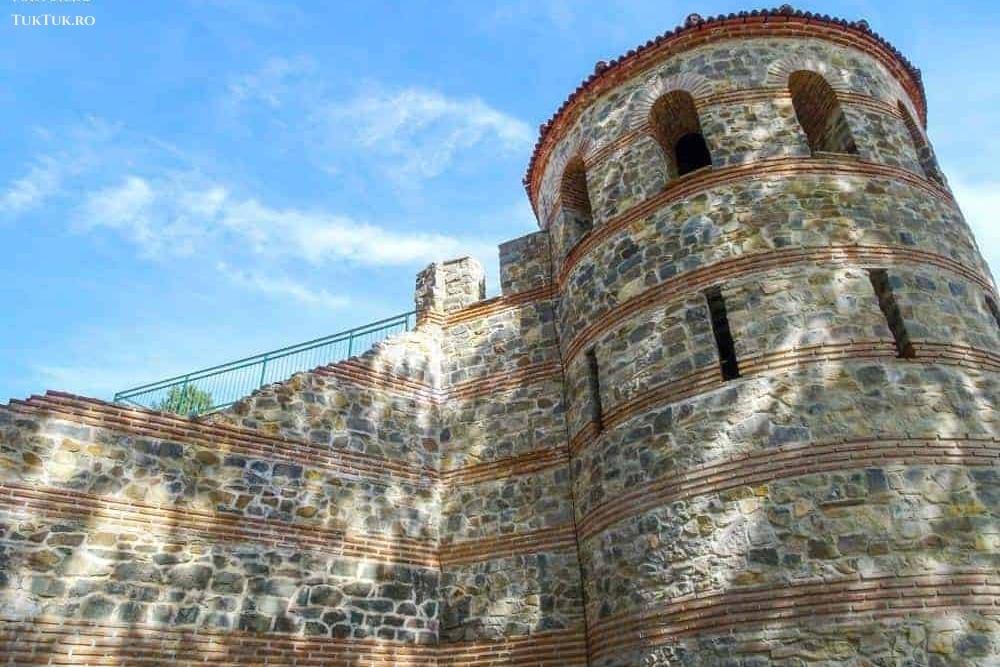
Hisarlaka was originally built at the end of the 4th and beginning of the 5th century when the town was known by its Slavic name – Velbazhd. Several extensions and reconstructions followed until the 15th century, when the fortress destroyed the Ottoman invasions. Out of the remains and enthusiasm, the Bulgarians rebuilt it. They brought it back to the tourist circuit, banking on the different building techniques, the combinations of building materials, and the archaeological excavations on display from place to place, proving that Hisarlaka was one of Bulgaria’s most important fortresses. It was shaped like an irregular polygon; it had 14 defensive towers, round, triangular, or rectangular, two gates, and five secret entrances. The thickness of the walls varied from 1.6 m to 3 m, and their height was about 10 m.
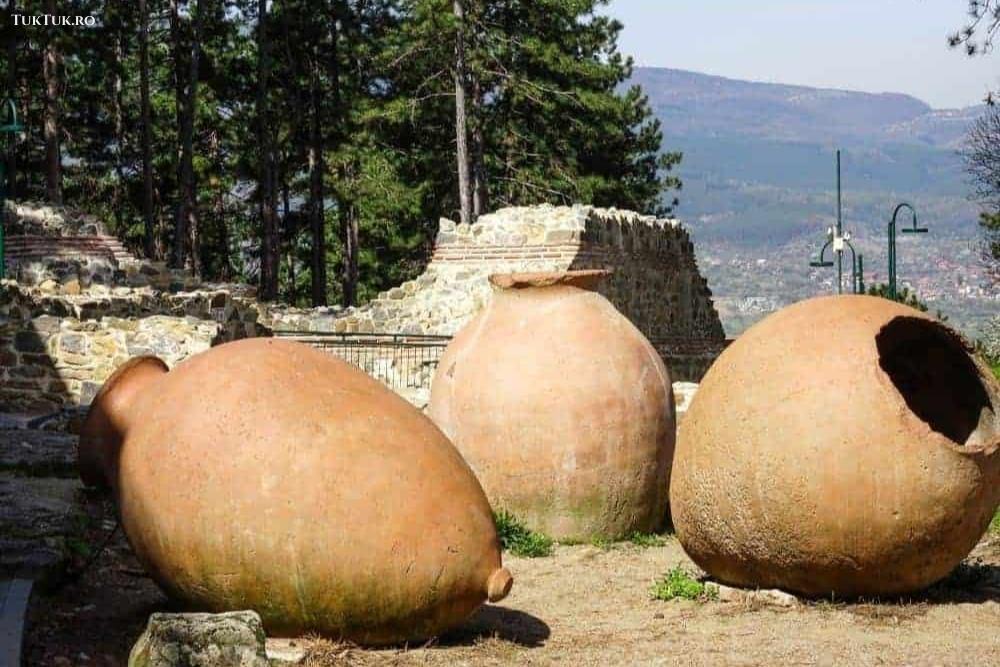
Walking along the walls is pleasant. Especially the view that shows at one point: with the town of Kyustendil in all its glory. “It’s beautiful in the evening; you can see everything lit up,” the guides say, and I take their word for it – a romantic spot where local lads have probably proposed to many Kyustendil girls. A small ‘theatre’ set up for various performances and, a little further down the hill, a zoo, add to the charm of a tourist attraction where the main aim seems to be to find peace and quiet and enjoy it.
I learn that Kyustendil has a particular appetite for festivals, with people in an almost continuous party mood. In spring, there is a beauty festival, “Spring in Kyustendil,” which is already nearly half a century old (1966) and “boasts” that it was the first beauty contest held in Bulgaria. The expression “Chestita prolet!” appeared on its borders, a wish for a “rich spring”.
The Cherry Festival is held in June, Kyustendil bearing the honorary title of “Mother of Bulgarian Fruit Cultivation” (the first national fruit exhibition was held here in 1896).
Two months later, in August, the town once again dresses up in festive garb with a “Panagia Bread Baking Festival”, a traditional Orthodox arts and culture forum held under the auspices of the church. The main idea is to preserve the tradition of bread baking from mother to daughter.
Finally, in September, the ‘Fertility Festival’ is about preparing the region for the arrival of winter, marking the end of the holiday season by highlighting the harvest, especially apples.
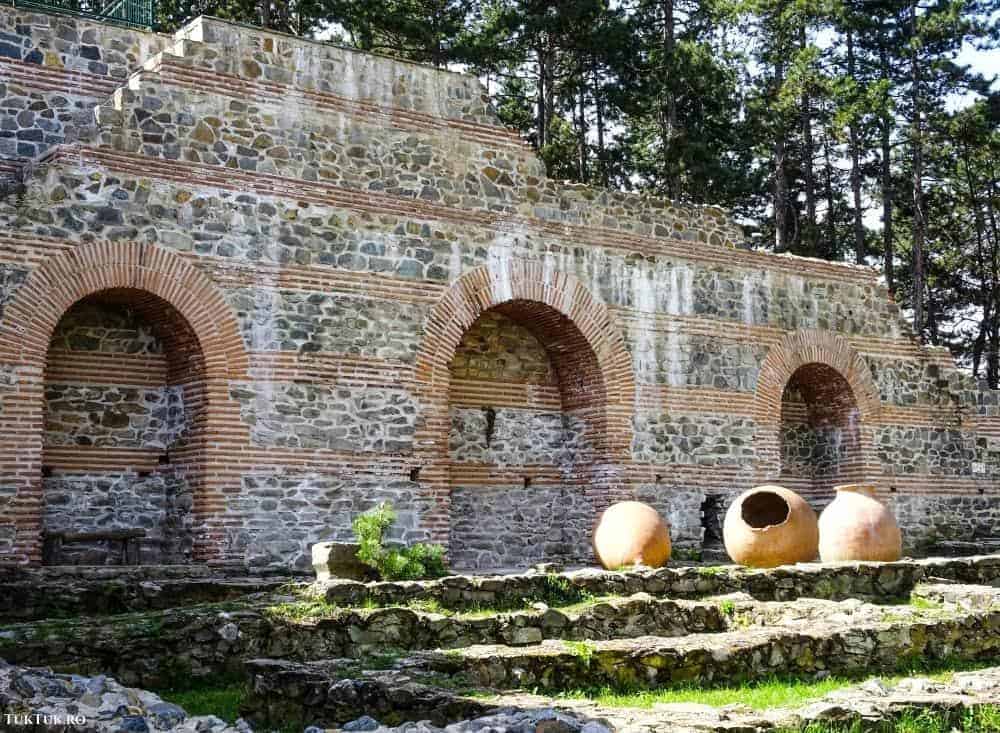


If you want to take part in any of these festivals, don’t forget that in Kyustendil you can combine any activity with one related to the thermal springs for which the town is famous. They have rich mineral content, are pure, colorless, have a pleasant taste and smell of hydrogen sulfide, and are perfect for treating numerous ailments: gynecological, those related to sexual dysfunction in men, those associated with the locomotor system, neurology, dermatology, heavy metal poisoning and so on.
Saint George and Saint Nicholas
But Kyustendil is not only about the fortress on the hill. A small church of almost rare beauty greedily steals the eyes and attention of the visitor who crosses its courtyard threshold. It is the church of St George, the oldest medieval church in Kyustendil. According to recently discovered frescoes, this small work of art (restored in the meantime) dates back to the 10th-11th centuries.
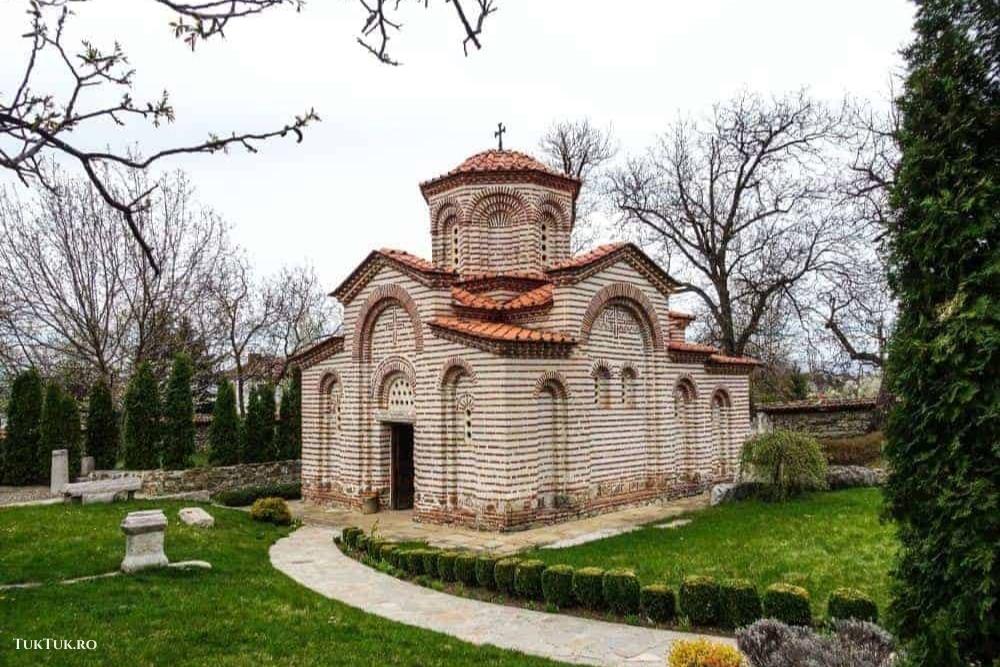
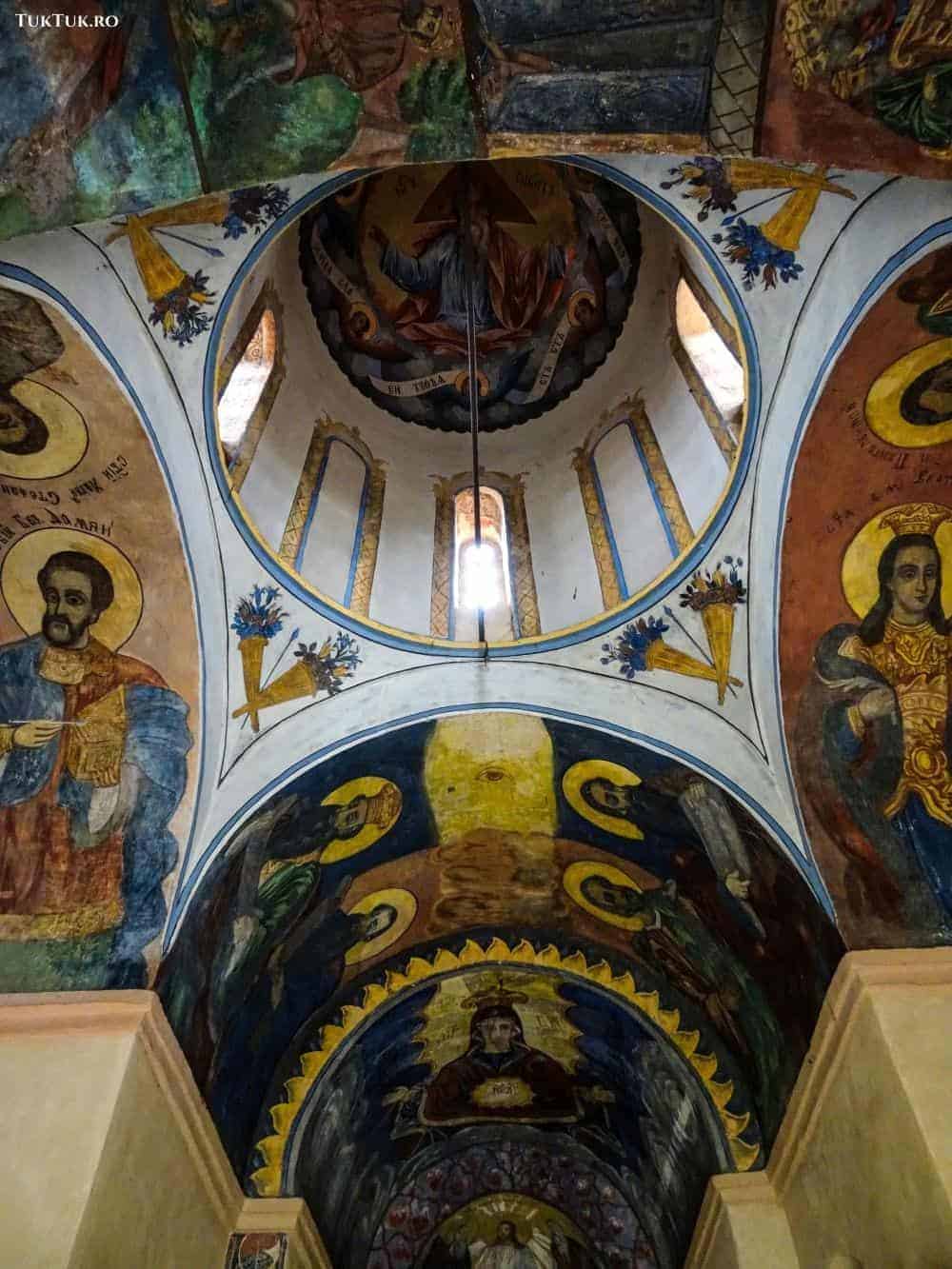


Unfortunately, in the 19th century, the same Ottoman raiders razed it to the ground. Fortunately, between 1878 and 1880, it was rebuilt. Then restoration came naturally, first in the 1970s, then in 1985, with efforts continuing after 1990, especially in 2004 when the church regained its original medieval form.
Inside, precious frescoes with Byzantine motifs decorate its walls. In the courtyard, magnolias bloom shyly, urging graceful photographs. An interesting exhibition of icons in the building next to the church exalts the aesthetic senses with color and good taste in the small museum in the building next to the church. The church is believed to include the tomb of Tsar Mikhail III Shishman, killed in the Battle of Velbazhd in 1330.
And yet, St George is not the only church settlement visited in Kyustendil province. The Bulgarians seem at least as concerned as the Romanians with the ecumenical side, so Dobri did not hesitate to lead us, initially, to another monastic settlement. Located in the village of Slokosita (4 km from Kyustendil), the church of St. Nicholas the Miracle-Maker appears at first glance to be a simple house with a side porch set in a courtyard by the roadside. I soon realized that things were a bit more complicated with the roof’s construction looking like a rather large hat.
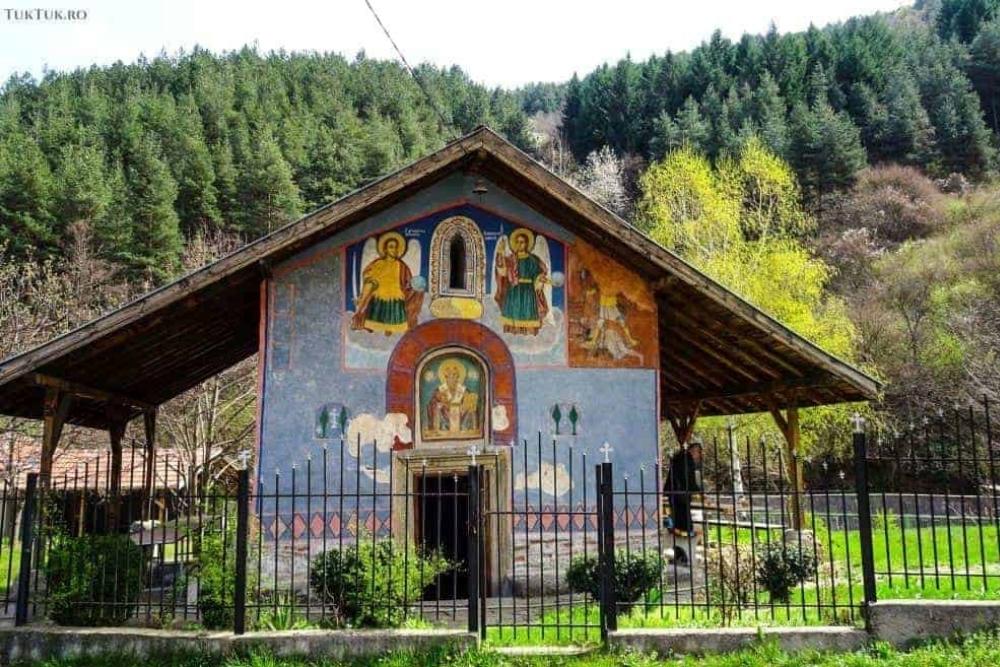


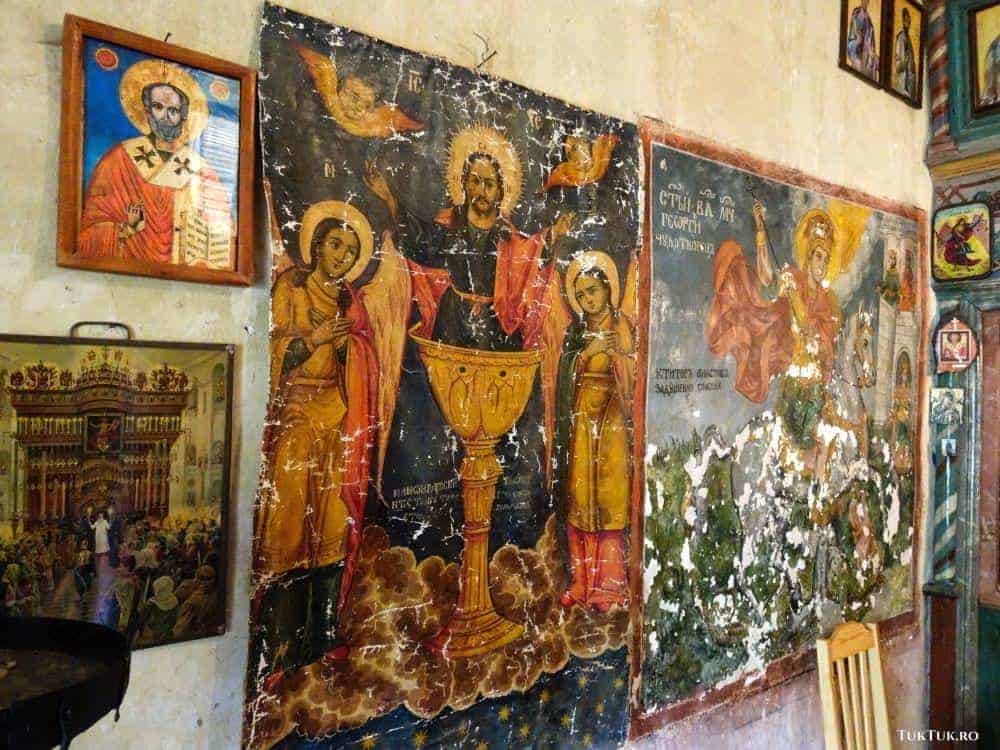
The little church dates from the 16th century, rebuilt and restored in 1886. St Nicholas, its patron saint, is painted above the entrance, with an inscription of 1886 below the painting. On either side of the saint, the images of Archangels Michael and Gavrila seem a guarantee that you should go out of your way to visit this place. The cramped interior also greets you with late medieval paintings from the 16th-17th centuries.
The legendary Kadin Bridge
You can’t leave Kyustendil (the neighboring village of Nevestino, to be precise) without crossing the Kadin Bridge. Perhaps, beyond its beauty, this bridge would be particularly appealing to you if you knew its legend. And once you know it, you will discover that Bulgarians and Romanians alike have generously shared the Balkan myths, massively “spun” by the Ottoman occupation that lasted so long that sometimes they got mixed up. So it is not known which and where was recorded first.
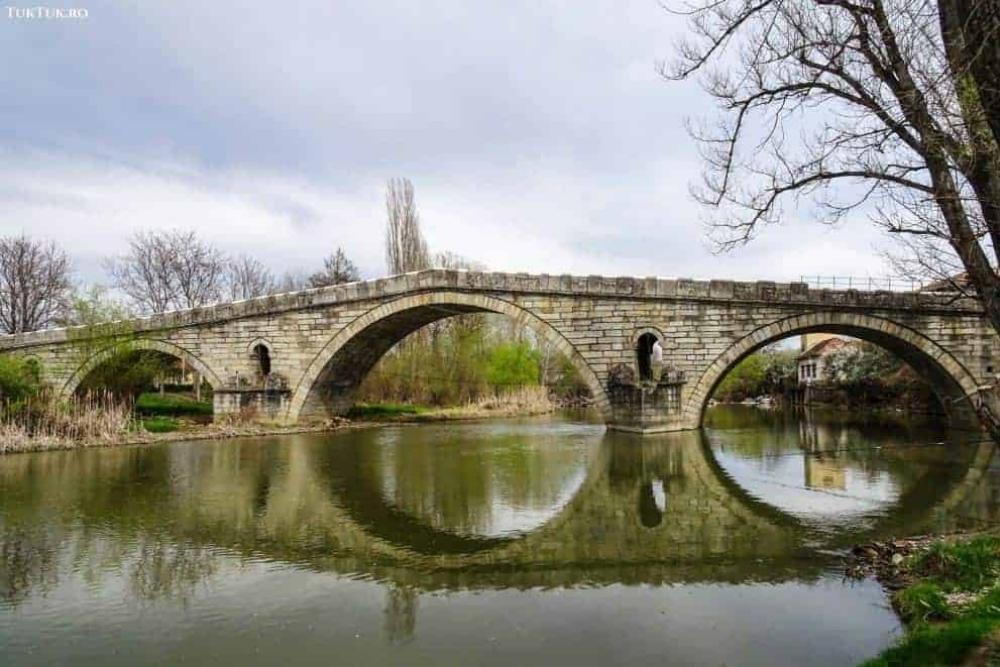
The Kadin Bridge is a genuine medieval architectural monument, 100 m long, built across the Struma River in five arches, the highest of which is the middle one. The bridge’s architecture is a mixture of ancient, medieval, and Renaissance elements reproduced in local style. The bridge is decorated with stalactite ornaments and rosettes. There is a granite plaque with an inscription in Turkish at one end, which says that the bridge was built by order of Isaac Pasha of Hegira in 1470.
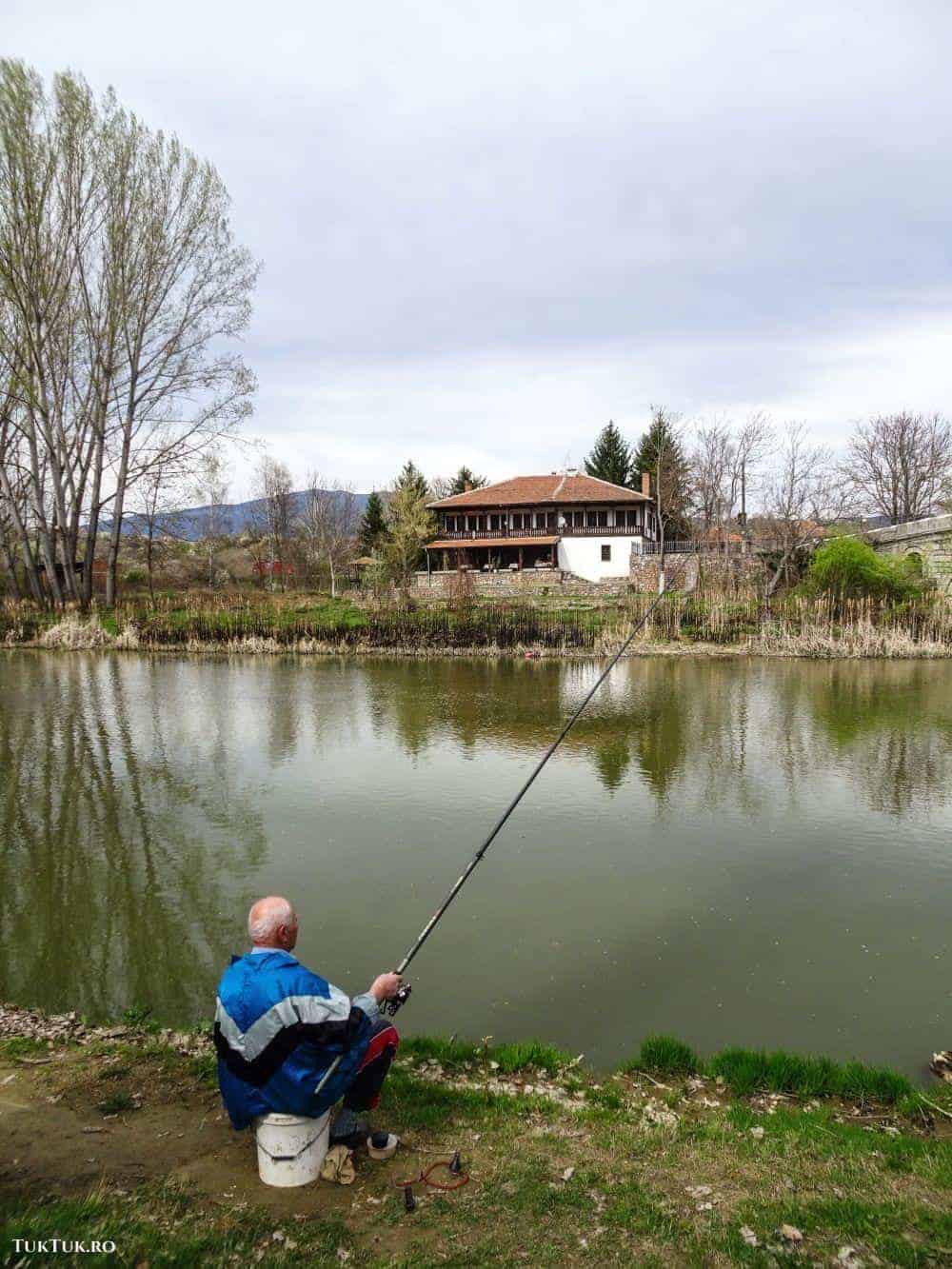
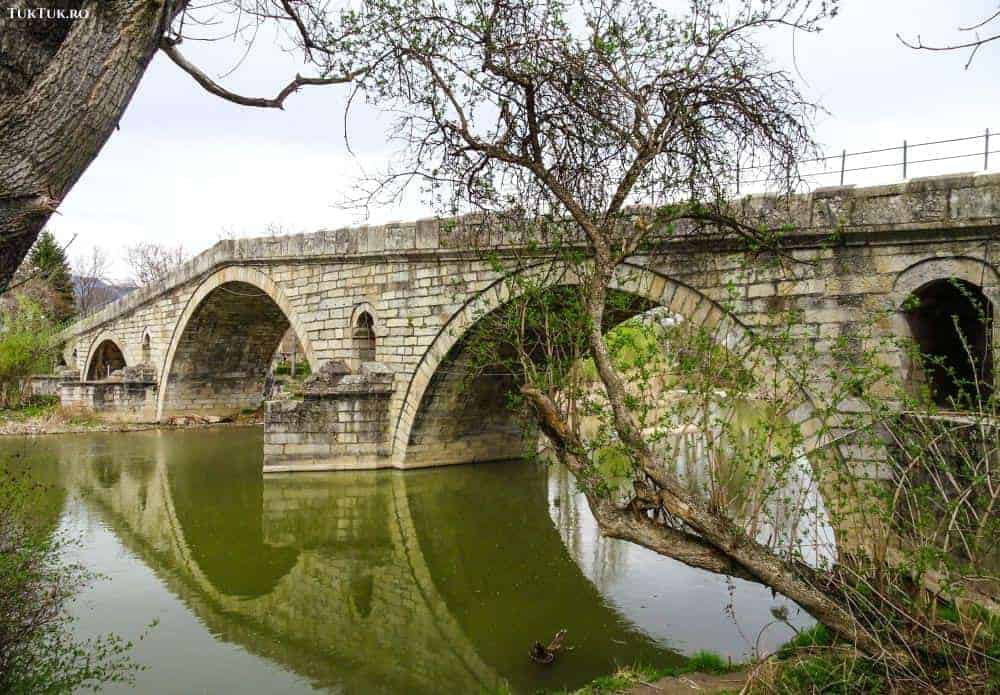
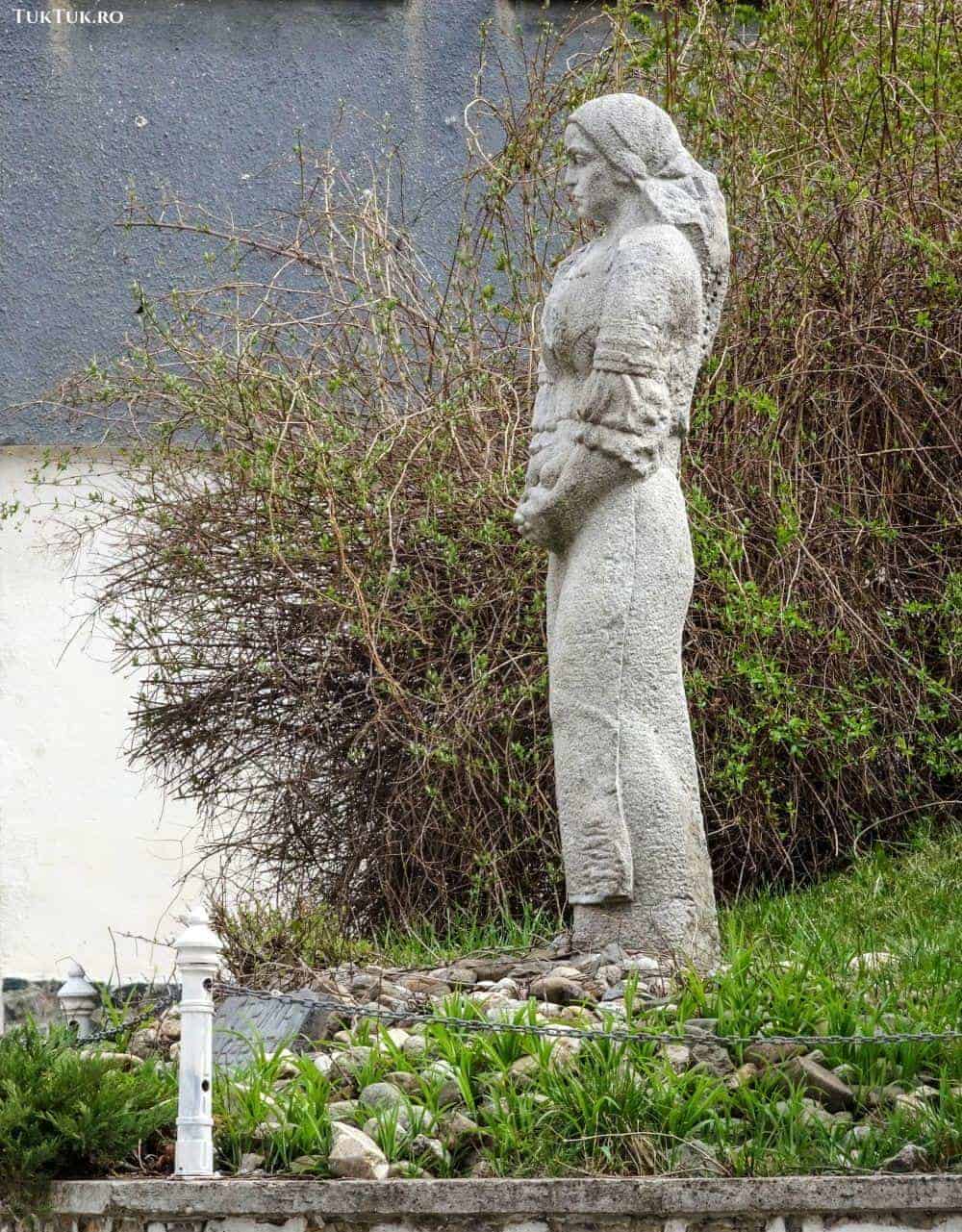
The name of the bridge, Kadin, translates into Turkish as ‘bride’. And it’s related to one of the legends I mentioned above, which will immediately sound familiar. The bridge is said to have been built by three brothers from the village, who couldn’t find peace because what they built during the day was washed away at night. The brothers decided to put an end to this “Sisyphean” situation and one day decided to sacrifice the wife of the man who would bring her husband breakfast first. That morning, the first wife to appear was brother Manol’s (sic!). The woman appeared on the horizon carrying the newborn baby in one hand and food for her husband in the other. When the brothers caught her and walled her in, she had only one request, and that was to leave a breast outside the wall and not to cover her eyes so that she could feed and see her baby.
The Kadin Bridge was considered one of the most beautiful monuments built in Bulgaria at that time, and in 1968 it was declared an architectural monument of national importance. From here, you can see the Rila mountain, and there is a park nearby with places to relax. Along the river, fishermen tried their luck, while along with it, a few cars parked in a working-class style demonstrated the relaxing, picnic-like utility of the area. I crossed the bridge, not before bidding farewell to Kyustendil’s guiding guides, and headed for my next destination, Melnik.
You may also like: Prices in Romania. How much does a holiday in Romania cost

